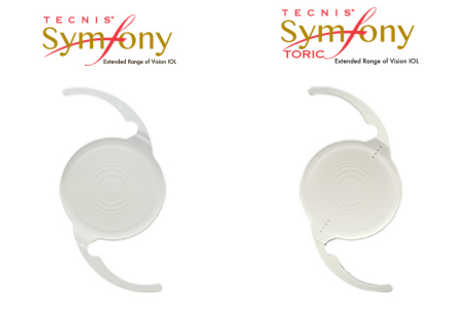If money were not an issue, the majority of eye surgeons in the world would choose Femtosecond Laser-Assisted Cataract Surgery (FLACS) with either the Catalys or LenSx Laser AND the Symfony Intraocular implant for their own eye.
Femtosecond Laser-Assisted Cataract Surgery (FLACS) has been shown in many studies to have the following positive aspects compared to Manual Cataract Surgery (non-Laser Surgery):
1. Quicker recovery
2. Less corneal edema for dense cataracts on first day after cataract surgery
3. Better refractive stability: the implant centers better and has less chance of being out of position which can affect the need for glasses.
4. Achieving the desired refraction (final need for glasses and astigmatism correction).
5. Creates a more precise capsulotomy which makes lens centration more precise and may decrease risk of Posterior Capsular Opacification.
6. Decreased Ultrasound Energy: Ultrasound energy destroys endothelial cells which line the inner cornea and keep the cornea healthy and clear.
7. Decreased post operative endothelial cell loss
8. Decreased risk of vitreous loss, particularly in dense cataracts
9. Faster refraction stability: it usually takes about 1 month for the final Rx for glasses can be given with Manual Non-Laser cataract surgery. With FLACS, it takes about 1 week.
10. More predictable results in correcting astigmatism with FLACS: the laser is just more precise than a human hand and correcting astigmatism.
11. Less tilt of the implant in FLACS cases with Toric Implants.
Key studies:
1. 2015 Outcomes Study by Conrad-Hengerer, et. al., JCRS: showed in 100 patients the ability for the doctor to hit the planned vision target (ie, refractive outcome) was better in patients who had FLACS ( 92% vs 71% were within 0.5D of target: FLACS was statistically significantly better).
Symfony:
Many eye surgeons are very happy to be able to use Symfony Implants on their patients. It increases the dept of focus, so a patient can see better for distance and intermediate without having to rely on glasses as much as with patients who receive a Monofocal Lens. Usually you will need the smallest strength readers for very small bring like the words on a medicine bottle. So far, my patients have been very happy with this implant.
The potential downside:
1. Need for readers
2. Some patients in studies have noted “spiderwebs” in their vision or halos. We have no way to determine who will experience this or not ahead of time which is very frustrating for everyone! I have not had anyone complain of this likely because I try to screen patients to avoid Multifocal or Symfony implants if they are very sensitive to any changes in their vision, if they do any driving at night time, have any Keratoconus, have macular degeneration, have clear visual field defects from Glaucoma, have irregular astigmatism.
3. The other frustrating thing is that surgeons cannot tell if you will like an implant or not until it is in your eye. So even in the best surgeons in the world, they will have a patient who is not happy with the results even with 20/20 vision after surgery. I am convinced this is often due to a poor tear film so it is important to look at the Meibomian glands in these patients.
4. The cost: a colleague of mine at an academic center charges $3500 per eye for this lens and laser. We charge less.
https://www.vision.abbott/us/systems/laser-cataract-surgery/catalys-precision-laser-system.html


